Why does my Sharp LCD TV sometimes make a cracking sound?
- LLaura MasseySep 14, 2025
The cracking sound your Sharp LCD TV sometimes makes is not a malfunction.

Why does my Sharp LCD TV sometimes make a cracking sound?
The cracking sound your Sharp LCD TV sometimes makes is not a malfunction.
How to troubleshoot no sound on Sharp LCD TV?
If there is no sound on your Sharp LCD TV, verify that the connection to other components is correct. Make sure the volume isn't too low and that you haven't pressed MUTE on the remote. Check the audio output of any connected external equipment to ensure the volume is not too low or muted. When external equipment is connected via an HDMI cable, you may need to configure the audio to be output through the HDMI cable. When audio is not output from external equipment connected to the PC IN or HDMI IN 2 terminal, check the "Audio Select" setting. Even when external equipment is connected using an HDMI-certified cable, an audio cable connection may be required depending on the type of equipment and the media being played back. When connecting a PC via an HDMI-certified cable, check if the audio...
| Display diagonal | 60 \ |
|---|---|
| LED backlighting type | Edge-Lit LED |
| Supported video modes | 1080p |
| Contrast ratio (dynamic) | 12000000:1 |
| Screen format adjustments | 16:9 |
| Viewing angle, horizontal | 176 ° |
| Supported graphics resolutions | 1920 x 1080 (HD 1080) |
| 3D | Yes |
| 3D type | Active |
| Built-in camera | No |
| Bundled software | Smart Apps, Web Browser, Web+TV Split Screen, Skype, Remote Control Apps (iOS/Android) |
| 3D glasses quantity | 2 |
| Placement supported | Horizontal |
| Tuner type | Analog & digital |
| Number of tuners | 2 tuner(s) |
| Analog signal format system | NTSC |
| Digital signal format system | ATSC |
| RMS rated power | 20 W |
| DVI port | - |
| HDMI ports quantity | 4 |
| USB 2.0 ports quantity | USB 2.0 ports have a data transmission speed of 480 Mbps, and are backwards compatible with USB 1.1 ports. You can connect all kinds of peripheral devices to them. |
| Component video (YPbPr/YCbCr) in | 1 |
| Wi-Fi standards | 802.11a, 802.11b, 802.11g |
| Lifestyle apps | Skype |
| Number of OSD languages | 3 |
| On Screen Display (OSD) languages | ENG, ESP, FRE |
| Product color | Silver |
| Panel mounting interface | 400 x 200 mm |
| AC input voltage | 120 V |
| AC input frequency | 60 Hz |
| Power consumption (standby) | - W |
| Power consumption (typical) | 187 W |
| Sustainability certificates | ENERGY STAR |
| Certification | Think Green |
| Package depth | 203 mm |
| Package width | 1727 mm |
| Package height | 915 mm |
| Package weight | 49000 g |
| Depth (with stand) | 360 mm |
|---|---|
| Height (with stand) | 837 mm |
| Weight (with stand) | 40000 g |
| Depth (without stand) | 58 mm |
| Width (without stand) | 1378 mm |
| Height (without stand) | 810 mm |
| Weight (without stand) | 33000 g |
Safety warnings regarding fire, shock, FCC compliance, and proper usage.
Details FCC and Industry Canada compliance statements for the device.
General safety instructions for installation, operation, and maintenance of the TV.
Safety guidelines for TV placement, ventilation, and proximity to heat sources.
Safety measures related to electrical connections, lightning storms, and power lines.
Guidelines for safe TV setup, including following instructions and securing the unit.
Precautions for mounting the TV on a wall or ceiling, including professional installation advice.
Safety tips for relocating older CRT televisions, especially regarding furniture stability.
Instructions to prevent accidental swallowing of 3D glasses parts by children.
Guidelines for physically handling, cleaning, and storing 3D glasses to prevent damage and ensure clarity.
Precautions for 3D viewing and battery safety, including potential discomfort and chemical hazards.
Lists and illustrates accessories provided with the television unit.
Lists optional accessories available for purchase for the Liquid Crystal Television.
Step-by-step instructions for attaching the TV stand to various models.
Information on how to enjoy high-definition images on the TV.
Steps for replacing batteries in the remote control unit to restore TV functions.
Explains how to connect antenna cables using various methods for optimal picture quality.
Identifies key parts of the TV (front, side, rear) and the remote control unit.
Guides on connecting various external video, audio, and PC devices to the TV.
Instructions for connecting Blu-ray/DVD players and HD cable/satellite boxes via HDMI or DVI.
Guidelines for connecting VCRs, game consoles, and camcorders using composite cables.
Instructions for connecting AV amplifiers and audio systems for surround sound.
Guides on connecting a PC using HDMI, DVI-HDMI conversion, or analog RGB cables.
How to turn the TV power on/off and put it into standby mode.
Steps for initial TV setup, including language, location, time, and antenna/cable settings.
How to perform automatic channel search and manage channel memory settings.
Guides for setting up wired or wireless network connections for Internet access.
Verifying and confirming the initial setup settings before completing the process.
Explains fundamental remote control functions for TV operation.
How to access SmartCentral applications and the Netflix service.
Adjust audio modes, sleep timer, AV modes for picture quality, and digital broadcast audio.
Information on accessing Netflix and selecting various AV modes for picture quality.
How to display and select closed caption services for conversations and sound effects.
Instructions on selecting different screen sizes and aspect ratios for various video signals.
Explains OSD guides, item selections, and navigation buttons on the TV and remote.
Overview of available menu categories like Picture Settings, Audio Settings, System Options, and Initial Setup.
Details available settings for picture quality and audio preferences.
Covers system configurations, initial setup procedures, and product information.
Covers Backlight, Contrast, Brightness, Color, Tint, Sharpness, and OPC settings.
Details CMS, Color Gamut, Color Temp, Motion Enhancement, and Game Type settings.
Adjusts film mode, digital noise reduction, monochrome, OPC range, and color settings.
Covers Auto Volume, Bass Enhancer, Clear Voice, 3D Surround, and Surround modes.
Options for saving energy, including audio-only mode, power saving levels, and auto shut-off.
Manages view options, apps, view modes, freeze function, audio/CC changes, and terminal settings.
Settings for input labels, HDMI setup, output selection, and color systems.
Manages secret number, operation lock, captions, game timer, quick start, wallpaper, and channel effects.
Guides through EZ Setup, language, location, time, and TV location settings.
Covers antenna, network, broadcasting, channel search, and favorite channel settings.
Configures secret number, parental control, V-Chip, and MPAA rating systems for content blocking.
Manages Bluetooth device connection, language settings, and wall mount audio preferences.
Configures TV startup logo, operation sound, and demo modes.
Further details on CH Setup, Broadcasting Setup, Favorite CH, Antenna Setup, and Internet Setup.
Guides on updating TV software via USB memory device or network connection.
Step-by-step guide for updating TV software using a network connection.
Important safety warnings and recommendations for 3D viewing, including eye strain and potential discomfort.
Explains different 3D image display methods and how the TV detects 3D signals.
Guides on ending 3D viewing and switching between 3D and 2D modes.
Covers watching 2D images in 3D and configuring TV settings for 3D viewing like auto change and depth.
Details 3D convert effects, viewing time, 3D test function, and 3D glasses control.
Guidelines for 3D glasses lenses, viewing precautions, and usage range.
Instructions for connecting USB memory devices and hard drives for photo, music, and video playback.
Guides on connecting to a home network server via Ethernet or wireless LAN.
How to navigate and select folders for playing photos, music, or videos from USB or network devices.
How to view thumbnails, individual photos, and manage slide show operations.
Accessing the USB menu and enabling 3D display for media files.
How to play music files, manage playlists, and use the USB menu in music mode.
Guides on selecting video files, playback controls, and using the USB menu in video mode.
Configuring auto play, slide show intervals, background music, and removing USB devices.
How to program the remote control to operate connected AV equipment using manufacturer codes.
Using operation panels for video playback on USB and Home Network devices.
Configuring DivX registration, playback from portable devices, and home network setup.
Explains how AQUOS LINK allows interactive control of HDMI equipment using one remote.
Guides on setting up AQUOS LINK, audio return channel, one-touch playback/recording, and link operation menu.
Using device panels for playback, recording, and setting up home networks for portable devices.
Configuring remote control playback and timeout settings for portable devices.
How to adjust PC image position, sync, clock, and phase for optimal display.
Setting PC audio input and controlling the TV via AQUOS Remote Control or RS-232C/IP.
Guides on setting up Internet connection via Ethernet or wireless LAN, including auto and manual setups.
Configuring IP settings, testing internet connection, and using the software keyboard for text entry.
Accessing AQUOS Advantage Live for information and support via the Internet.
How to navigate web pages, use the toolbar, view links, and manage browser settings.
Information on browsing web content, disclaimers, and security warnings related to Internet access.
Configuring browser settings, security options, certificates, and cookies.
Using keyboard/mouse with the browser and managing internet applications.
Outlines terms of service, disclaimers, and liability limitations for third-party content and services.
Step-by-step instructions for safely removing the TV stand from various models.
Guides on wall mounting using brackets, setting TV angle, and procedures for different models.
Recommendations for safely installing the TV on a wall using a mount kit, including professional assistance.
Provides standard dimensions for wall mount kits and specifications for mounting screws.
Addresses common problems like no power, picture issues, sound problems, and remote control malfunctions.
Provides solutions for issues related to 3D images not displaying correctly.
Explains common error codes and their corresponding solutions, like broadcast reception issues.
Procedure to clear the secret number for parental control and other settings if forgotten.
Provides detailed specifications for LCD panel size, resolution, and TV receiving systems.
Details FCC, COFETEL, and standard specifications for the TV's wireless LAN functionality.
Covers Bluetooth certification, FCC/Industry Canada notices, and safety precautions for radio wave exposure.
Lists registered trademarks for Sharp products, technologies, and associated services.
Details the US consumer limited warranty, exclusions, and service procedures.
Provides warranty information specific to Canada, including terms and how to obtain service.
Provides detailed physical dimensions for the LC-80LE857U, LC-70LE857U, and LC-60LE857U models.
Provides physical dimensions for the 70-inch and 60-inch LE757U, LE755U, LE750U, and C7500U TV models.
Provides physical dimensions for the 90, 80, 70, and 60-inch LE657U, LE655U, LE650U, and C6500U TV models.

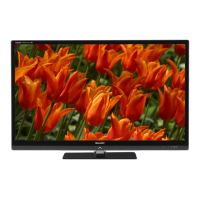

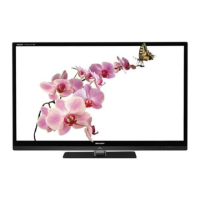
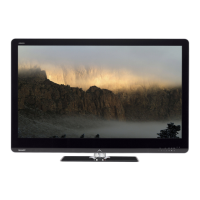
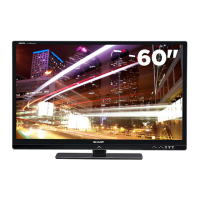
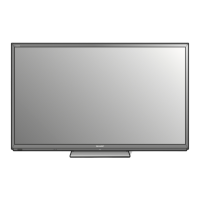
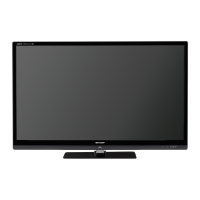


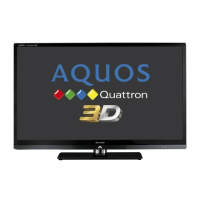
![Preview: LC-52/60LE830E/RU/E[B]/RU[B]](https://data.easymanua.ls/logo/brand/70/200x200/sharp.webp)
